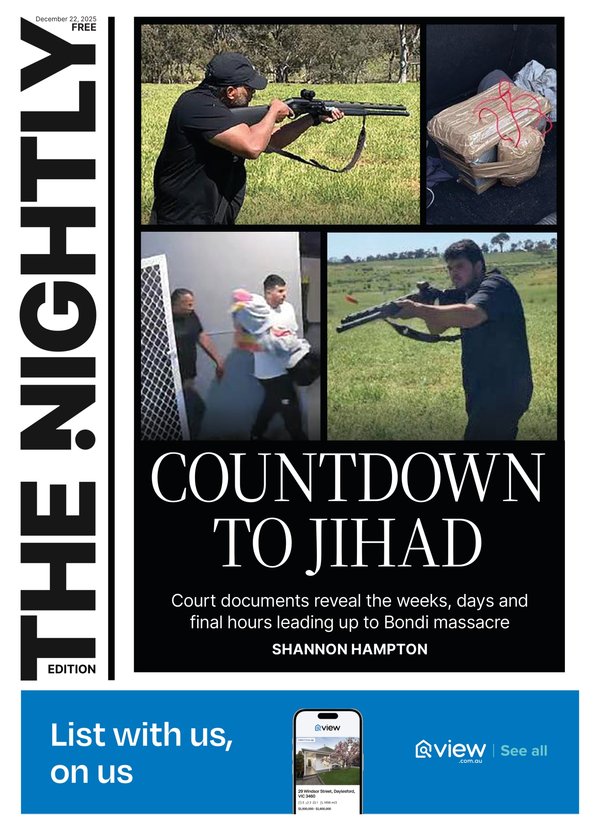Housing affordability crisis deepens as young Australians sound the alarm

Australia's housing affordability crisis is worsening at its fastest pace in decades, with new analysis revealing the pandemic-era boom, supply constraints and stalled interest-rate cuts are continuing to push property prices out of reach, particularly for young Australians already overwhelmed by cost-of-living pressures.
Cotality Head of Research Eliza Owen said the affordability breakdown is the result of a powerful combination of surging demand and obstructed supply.
"Australian home values have climbed roughly 47.3 per cent since March 2020, an extraordinary rise that added about $280,000 to the median dwelling value," Owen said.
Sign up to The Nightly's newsletters.
Get the first look at the digital newspaper, curated daily stories and breaking headlines delivered to your inbox.
By continuing you agree to our Terms and Privacy Policy."This surge was fuelled by pandemic-era monetary stimulus and record-low interest rates that supercharged borrowing capacity and demand, even as housing supply lagged well behind household formation."
She said the construction sector has been unable to keep pace.
"Supply-side limitations have also compounded these demand pressures, with construction sector insolvencies, rising material costs and planning bottlenecks restricting new housing delivery," she said.
"In short, the past five years combined extraordinary demand drivers with supply constraints, creating an extraordinary boom in both home values and rents."
A generation under stress: Young Australians want urgent action
New data from Mission Australia's Youth Survey, the largest of its kind in the country, shows young people are increasingly bearing the brunt of Australia's housing and cost-of-living crisis.
More than 17,000 young Australians aged 14 to 19 took part in this year's survey, nominating the top issues they believe the nation must address:
- Cost of living (64 per cent )
- Mental health (29 per cent )
- Climate change & environment (27 per cent )
- Housing & homelessness (25 per cent )
It is the second consecutive year the cost of living has topped the list and it has risen sharply.
Mission Australia CEO Sharon Callister said the trend is deeply worrying.
"Young people's concern about the issue has climbed sharply; 31 per cent of respondents in 2023 reported it was a key concern; in 2024, it was 56 per cent and in 2025, it reached 64 per cent, the highest level since the question was first asked in 2010," she said.
"It's a record we never wanted to see broken."
"Young people are telling us that the strain of rising prices and not having money for basic essentials is taking a toll on their mental health and their outlook on life."
Concern about housing and homelessness has also surged, doubling since 2022.
"One in four young people are worried about housing and homelessness, they are witnessing and experiencing it at higher levels than ever before," Callister said.
"Young people are watching their friends and family struggle to pay bills or afford stable housing, and it's impacting them."
She said the findings point to "an urgent need for more investment in social and affordable housing, youth-specific housing like Youth Foyers, and practical supports that can make a real difference."
Sydney the most exposed as rate cuts stall
With the RBA pausing rate cuts and uncertainty lingering over future easing, Owen said major metro markets are likely to respond unevenly.
"At the end of last year, we saw a culmination of a long pause in the cash rate, cost-of-living pressures and affordability constraints weighing on demand," Owen said.
"That could very well play out again now that housing is even more expensive and a reduction in the cash rate looks far less likely."
She said Sydney is the most vulnerable.
"Sydney will be most impacted by a stall in the cash rate, both because it is highly unaffordable and it has historically been most sensitive to changes in financial conditions."
By contrast, Melbourne may find some resilience. "Melbourne could actually have an affordability advantage which staves off price falls and holds off demand," she said.
Brisbane, meanwhile, continues to outperform. "Brisbane seems somewhat unstoppable right now with strong population and jobs growth and plenty of infrastructure investment ahead of the Olympic Games," Owen said.
"However, we could see some steam come out of the pace of growth amid stalled rates."
Perth, Brisbane and Adelaide still the tightest markets
Cotality data shows sales continue to outstrip new listings across the capitals, keeping prices elevated for now.
"Perth, Brisbane and Adelaide continue to show some of the biggest deficits in listings relative to their historic averages, down 43.8 per cent , 28.9 per cent , and 27.7 per cent respectively," Owen said.
"In WA and QLD, net interstate migration remains firmly positive, suggesting ongoing fundamental demand across rentals and purchases. This is likely to keep a floor under home values. For example, in Perth, the median time on market was still only 11 days in the three months to October."
Owen said Darwin has also transitioned into a seller's market. "Total listings have declined rapidly, down 38 per cent from a year ago and 50 per cent below the five-year average."
National first-home-buyer trends remain difficult to parse in real time, but Owen said recent ABS data gives some clues.
"We don't really have visibility of which markets have seen the biggest boost from the expanded 5per cent deposit scheme in the past month," she said.
"But in the September quarter, ABS housing finance data showed the strongest uptick in first-home-buyer loans was in Tasmania (up 2.0 per cent ), followed by South Australia (1.9 per cent ) and Victoria (1.4 per cent )."

Originally published as Housing affordability crisis deepens as young Australians sound the alarm
